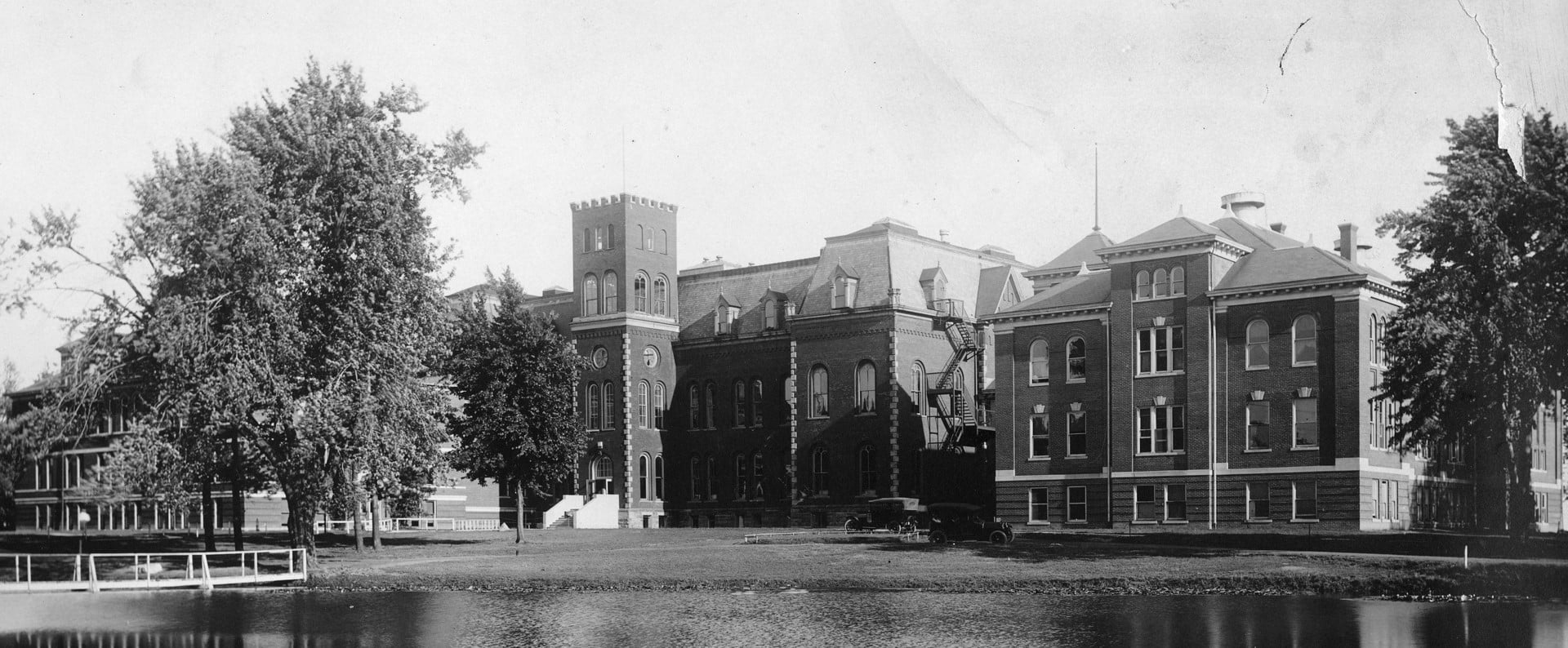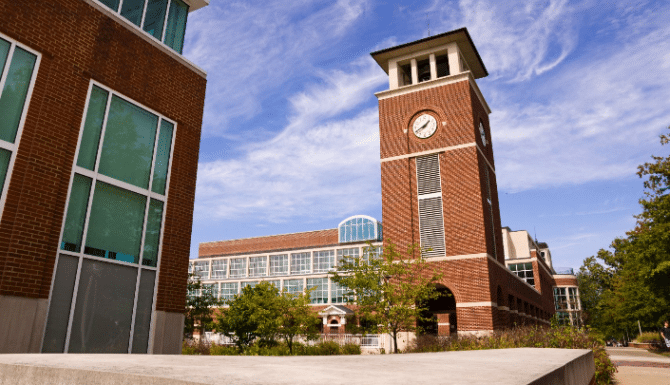History of Truman State University
A Tradition of High-Quality Academics
Since its founding in 1867, Truman State University has been committed to providing intellectual pursuits based on student-centered learning.
When Joseph Baldwin, an innovative educator, opened a teachers college in Kirksville, Missouri, in 1867, he placed excellence in student learning as one of his top priorities. Under the guidance of visionary leaders and dedicated faculty, a strong focus on student learning has remained a common thread for the institution.
Fast forward to today and you’ll discover Truman has achieved a national reputation for providing graduates with high reputation credentials.
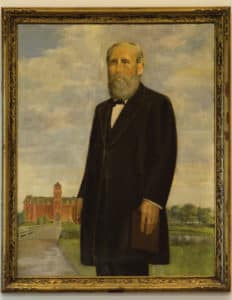
Historical Timeline
This timeline illustrates the evolution of Truman State University from a training ground for teachers during its early years to a nationally recognized liberal arts and sciences institution that prepares students for success in whatever profession they pursue.
1824
The ancestral land of the Ioway, Missouria, and Otoe peoples is ceded in the Treaty of 1824. This land is later occupied by the University.
1867
Joseph Baldwin opens the North Missouri Normal School and Commercial College in Kirksville, Missouri.
During the early years, Baldwin’s private school operates in a building originally built to house the Cumberland Academy, a non-collegiate coed school, which closed before the building was completed. Today, a bronze table placed upon a large boulder in Memorial Park marks the former location of the Cumberland Academy.
Photo: Cumberland Academy Building (1867)

1868
The school’s name is changed to North Missouri Normal School.
1870
The school becomes the Missouri State Normal School of the First District., the first Missouri-supported institution of higher education established for the primary purpose of preparing teachers for public schools.
1873
The Normal Building, later renamed Baldwin Hall in 1905, is the first building erected on the site of the current campus. Today, Kirk Memorial is located on the area formerly occupied by the tower of Old Baldwin Hall.
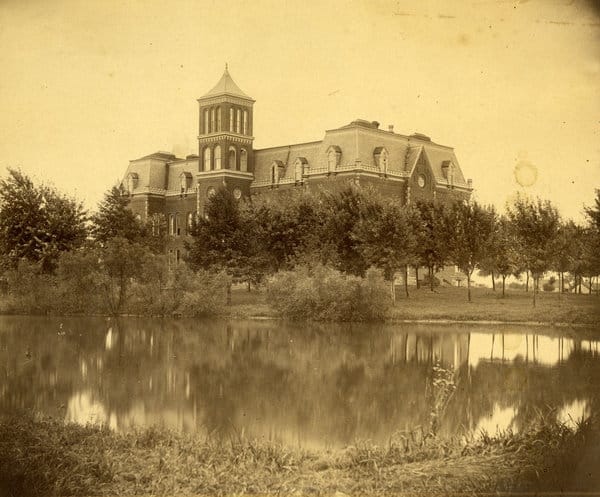
1902
Basil Brewer writes a school song named The Purple and the White, and the school adopts purple and white as the official colors.
1913
Eugene Morrow Violette, professor of history, sees the usefulness of visual aids in teaching and begins collecting materials and artifacts representative of early life in northeast Missouri. Some of the items he collected are now on display in the Ruth Towne Museum and Visitors Center which also houses Truman’s Office of Admission.
1915
The Bulldog, a symbol of tenacity, is adopted as the official school mascot.

1919
The school’s name is changed to Northeast Missouri State Teachers College.
1924
Old Baldwin Hall is destroyed by a fire. 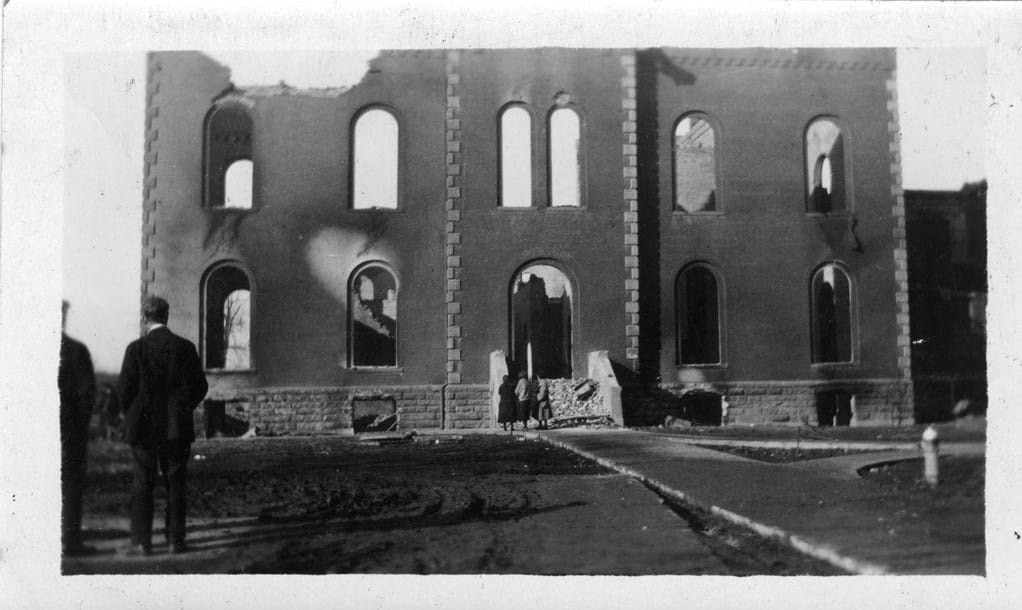
1927
The statue of Joseph Baldwin is erected on the Quad in honor of the 100th birthday of the school’s founder.
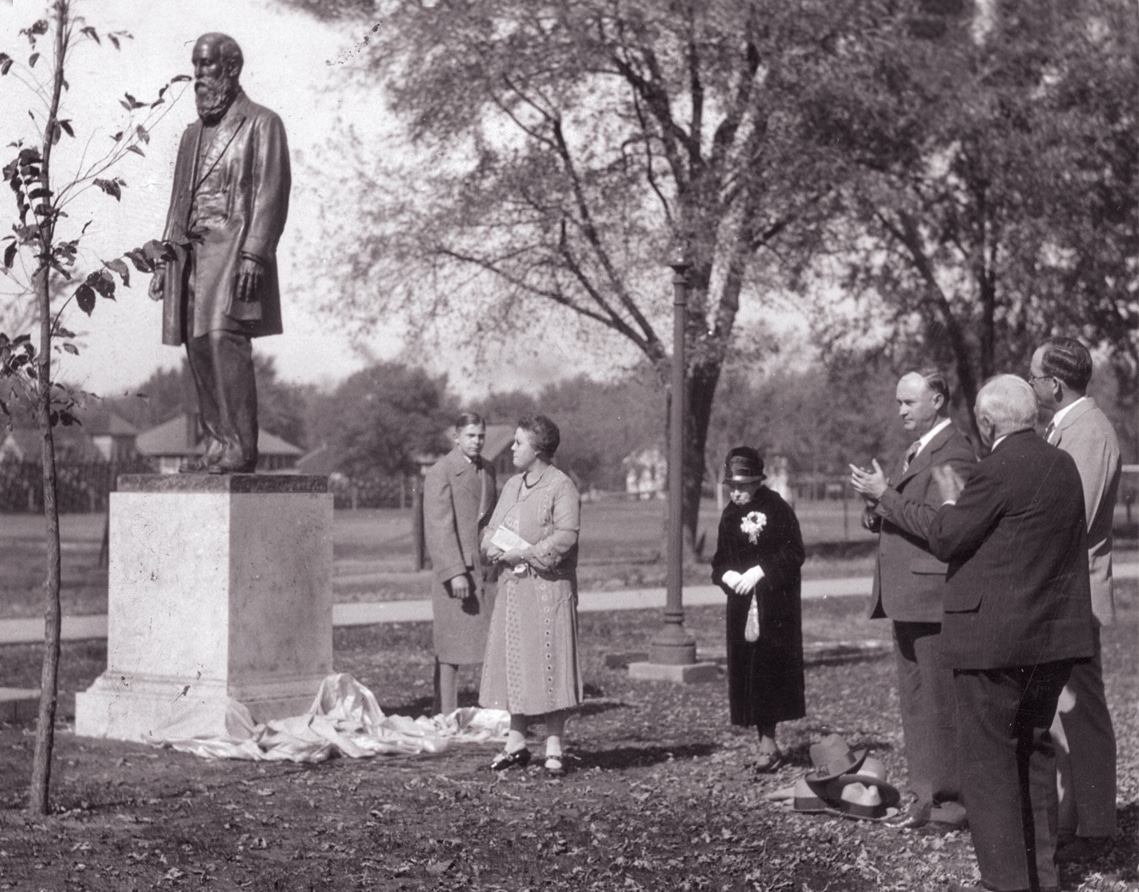
1967
The Bell Wall built between Missouri Hall and the Quad is dedicated at the Centennial Celebration. The bells were donated by Joe Burdman, a local businessman and University benefactor. Burdman collected the five bronze bells from churches, schoolhouses, and public buildings in northeast Missouri.
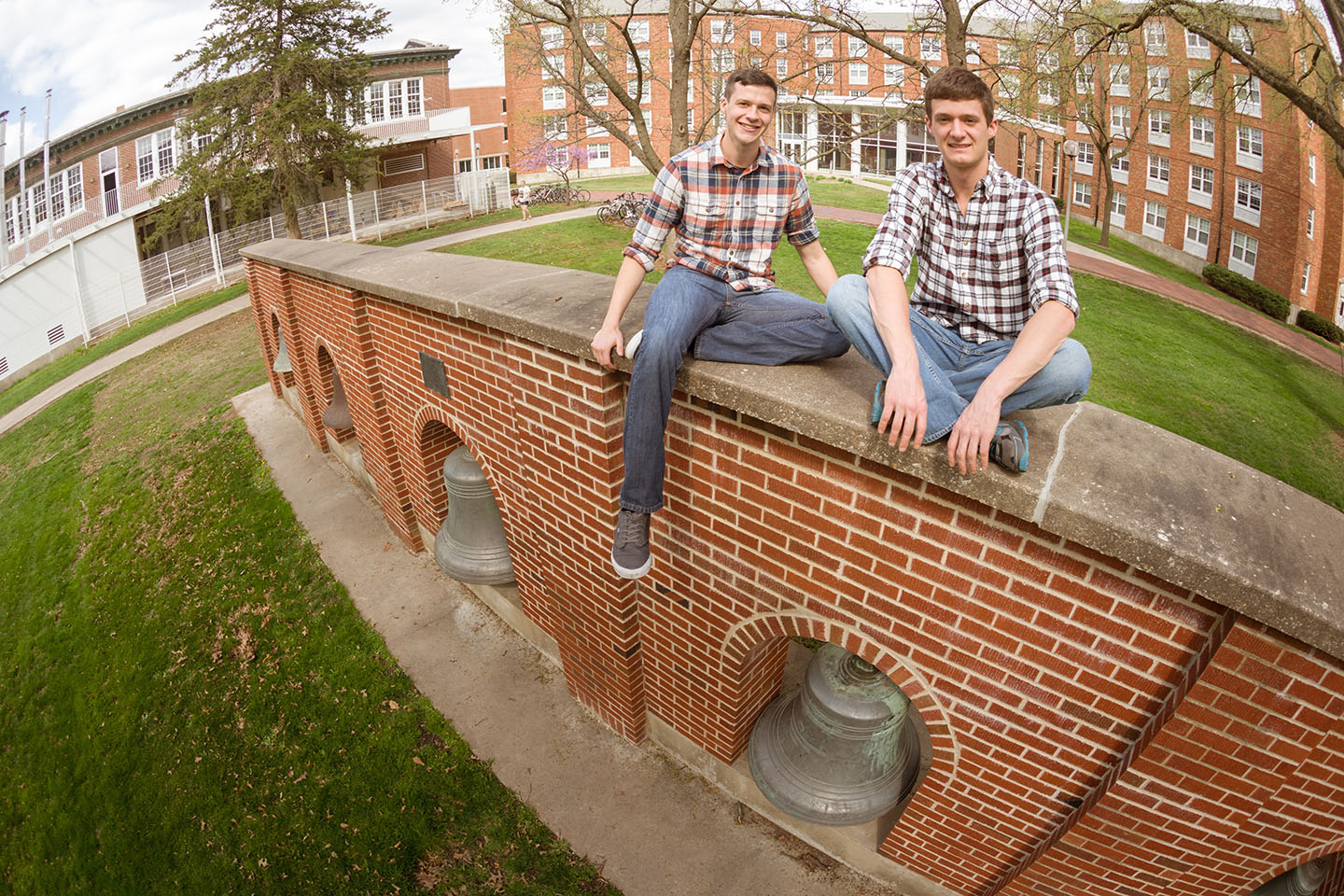
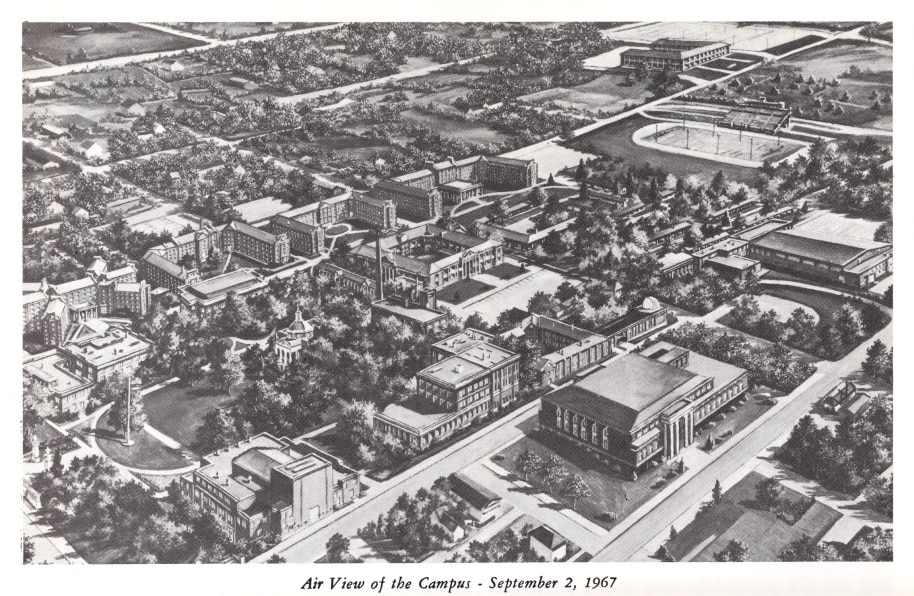
1968
The school’s name is changed to Northeast Missouri State College.
1972
The school’s name is changed to Northeast Missouri State University.
1974
Gail Albright, retired assistant professor of speech, writes the Truman fight song, Hail to the Bulldogs!
1983
The University is awarded the prestigious G. Theodore Mitau Award for Innovation and Change in Higher Education by the American Association of State Colleges and Universities.
1985
Gov. John Ashcroft signs legislation designating the University as Missouri’s only statewide public liberal arts and sciences university, expanding its mission from a regional to a statewide institution. Truman was chosen to assume this unique role because the institution had already begun moving away from a multipurpose curriculum toward a competitive liberal arts curriculum. The state’s goal was to provide a public institution that could compete with the nation’s finest undergraduate liberal arts colleges, and stem the flow of Missouri’s best and brightest students to other states.
1992
The Clock Tower bells are dedicated on Oct. 16, 1992. Ruth Warner Towne (’39), the University’s first honor graduate who taught history at Truman and also served as dean of Graduate Studies from 1983 to 1988, presented the University with a gift of four bronze bells and a carillon for the Pickler Memorial Library clock tower in memory of her parents.
1993
In March 1993, Truman becomes the first public university in Missouri opting to achieve the Missouri Coordinating Board for Higher Education’s highly selective mission category.
1995
On June 15, 1995, coinciding with the 10th anniversary of the mission change to a statewide university, Gov. Mel Carnahan signs legislation changing the University’s name to Truman State University. The new name complements the school’s statewide mission and honors Harry S. Truman, the only Missourian to serve as the President of the United States.
1996
The new name, Truman State University, becomes official on July 1, 1996.
TODAY
Building on its rich history, the University has consistently been committed to academic excellence and the belief that a strong education is the best means of preparing for a life of continuing personal growth and service.
Historical Overview
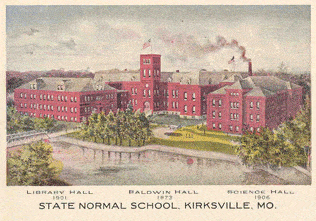
Truman bears a long history of name changes, each reflecting a new institutional mission. On December 29, 1870, as a result of persistent leadership by Baldwin and Adair County citizens, Missouri’s General Assembly acted to make Baldwin’s private college the First District Normal School, the first Missouri-supported institution of higher education established for the primary purpose of preparing teachers for public schools.
Nearly fifty years later, through an act passed by the General Assembly and signed by the Governor on May 20, 1919, the normal school became Northeast Missouri State Teachers College.
Throughout its history, Truman has steadily provided leadership and reflected a spirit of innovation in response to need. In 1967, the Board of Regents recognized the institution’s wider mission and acted to change the name first to Northeast Missouri State College, and then in 1972 to Northeast Missouri State University.
Truman historically has welcomed change. To better serve the needs and actualize the potential of its students, the University has met challenges creatively but realistically. The signing of House Bill 196 on June 20, 1985, changed Truman’s mission from an open enrollment, regional, multipurpose university to the statewide, public, liberal arts and sciences institution. Truman was chosen to assume this unique role because the institution had already begun moving away from a multipurpose curriculum toward a competitive liberal arts curriculum. The state’s goal was to provide a public institution that could compete with the nation’s finest undergraduate liberal arts colleges, and stem the flow of Missouri’s best and brightest students to other states. In March 1993 Truman became the first public university in Missouri opting to achieve the Missouri Coordinating Board for Higher Education’s highly selective mission category. The University’s name change to Truman State University on July 1, 1996, was part of the logical progression of its new mission.
Forty years ago in another innovative venture, Truman initiated a comprehensive student assessment program to measure the quality of education at Truman. During recent years, Truman has continued to build its assessment program, the purpose of which is to ensure that each of its students receives the highest-quality liberal arts and sciences education, tailored to his or her needs, and an academic degree of integrity. Numerous institutions, authors, and leaders in higher education have cited the program as a viable model to emulate in efforts to ensure educational accountability.
A continuity of purpose is evident in the growth and changes of Truman. The University has consistently been committed to academic excellence and has espoused the belief that a strong education is the best means of preparing for a life of continuing personal growth and service. Moreover, its historic mission to improve the preparation of teachers has prompted the University to be among the nation’s leaders in making education more professional. Commitment, unity of purpose, and concentration on student learning – putting first things first – have brought Truman to its present mission and academic excellence.
